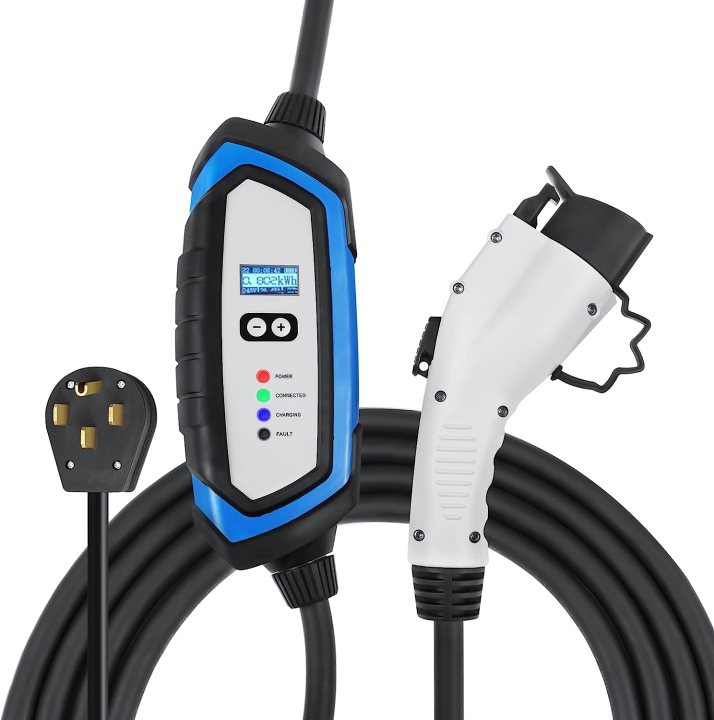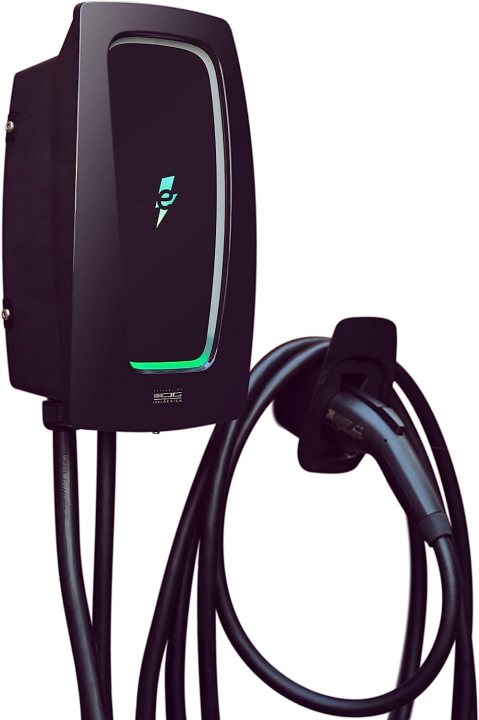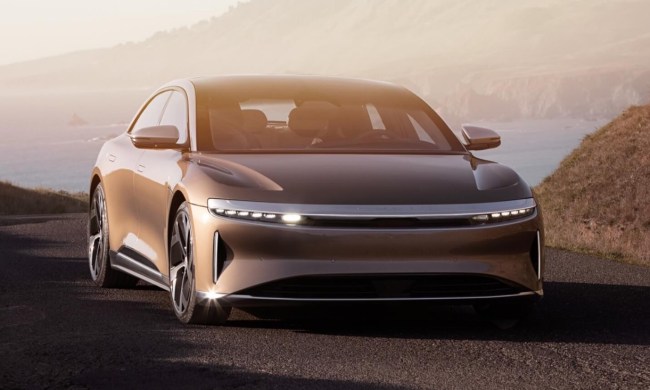
When you brought home your shiny new electric vehicle, it came with a home charging cord. But that was likely a Level 1 charger, which can only add two or three miles of range per hour. Upgrading to a Level 2 home EV charger can triple that speed — or more — plus provide you with a multitude of options to help lower your electricity bill and extend your car battery life.
In other words, it's now easy to keep your car topped up without ever having to drive to a DC fast charging station unless you're on a road-trip -- ensuring that in day-to-day use, your car will stay fully charged.
There are, of course, a few things to note before buying a home EV charger. For starters, most of the chargers on this list make use of the SAE J1772 connector that works with most modern EVs that aren't Teslas, which need an adapter. That said, that's likely to change over the next few years, as a number of car manufacturers have announced that they're switching the charging ports on their cars to the Tesla NACS connector. Also, it's important to keep in mind that Level 2 chargers can't be plugged into a standard 120-volt outlet, so a larger 240-volt outlet is required. You also have to make sure your home’s electrical system can handle the charging station. Manufacturers should provide instructions on how to determine that.
It's wise to check our list of local EV tax credits and incentives before you select a charger, since many local utilities offer generous rebates that may cover most or all of the cost of your charger, but only if you select the right model. Typically utilities incentivize smart, internet-connected chargers that can be remotely throttled back in the event of a brownout. Always check the terms and conditions to make sure you're following them to the letter.
From the five best electric vehicle charger manufacturers come our top home EV chargers. Check out the best home EV chargers below.





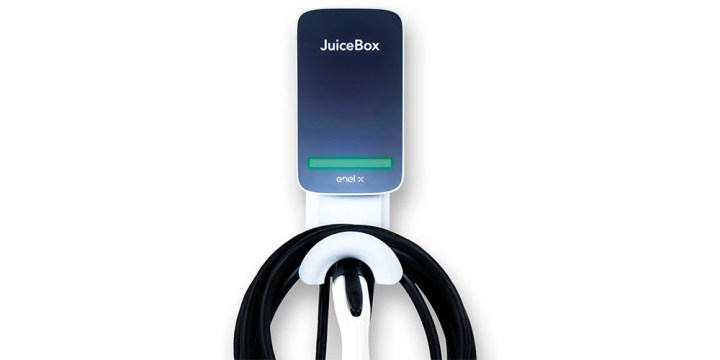
JuiceBox 40 Charging Station
Two can play at this game
- Compatible with Google Home and Alexa
- Long 25-foot cord
- Hardwired or plug-in
- One circuit can handle multiple JuiceBoxes
- Expensive
- Maxes out at 40A
The Enel JuiceBox comes in 32-amp or 40-amp models and is Wi-Fi-enabled, allowing you to monitor and schedule charging with the JuiceNet mobile app or web portal. The charging station features a built-in cable rack and security lock. You can choose to buy the model that hardwires into your house or the plug-in model that comes with a NEMA 14-50 plug, or the optional NEMA 14-30 or 10-30 plugs.
The charging station can also be controlled and monitored with Amazon Alexa or Google Home. Indoor or outdoor use is possible because the unit is weatherproof, dust-tight, and made of polycarbonate. The JuiceBox makes a smart buy if you think you may someday own multiple EVs, because you can connect multiple JuiceBox charging stations to the same circuit.
| Hardwired or plug: | Both |
| Amp rating: | 32 and 40 |
| Wi-Fi capability: | Yes |
| Cord length: | 25 feet |
| Indoor/outdoor: | Both |
| Warranty: | 3 years |

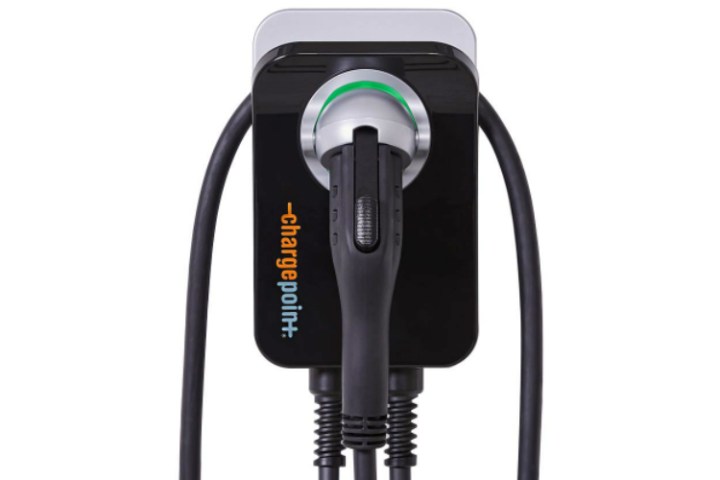
ChargePoint Home Flex Electric Vehicle Charge
The fastest option
- Charging speeds up to 50A
- Works with existing ChargePoint app
- Hardwired or plug-in
- Expensive
ChargePoint, also known for its network of public charging stations, offers one model for home charging. The older 32A model has been recently discontinued. The company's latest model, Home Flex, offers adjustable amperage to 50 amps so owners can match their electrical panel’s or car’s capacity. The plug-in model can be used outdoors (unlike the 32A model) and comes with a NEMA 14-50 or NEMA 5-50 plug. The Home Flex can also be used with the ChargePoint app, Nest, and Amazon Alexa. Both models are Energy Star certified, making them the only ones on this list. That can be important for rebate eligibility in some scenarios. The ChargePoint app used to control and monitor charging can also be used to locate and pay for public charging stations.
| Hardwired or plug: | Both |
| Amp rating: | Adjustable up to 50 amps |
| Wi-Fi capability: | Yes |
| Cord length: | 23 feet |
| Indoor/outdoor: | Yes |
| Warranty: | 3 years |

Lectron Level 2 EV Charger
The cheapest option
- Affordable
- Compact
- No smart features
- Maxes out at 32A
If you're looking for something relatively basic, then the Lectron 32 NEMA 14-50 EV charger may be worth considering. You won't get fancy features like Wi-Fi connectivity, but you will be able to easily charge at home at a reasonably fast pace, without having to pay for extra bells and whistles. It's relatively compact too, which might make it a better choice for some users.
This charger is 32 amps and can be used both indoors or outdoors. It can be plugged in or hardwired and uses the J1772 connector, so it should connect perfectly fine to most non-Tesla EVs.
| Hardwired or plug: | Both |
| Amp rating: | 32 |
| Wi-Fi capability: | No |
| Cord length: | 21 feet |
| Indoor/outdoor: | Yes |
| Warranty: | 1 year |

Electrify America Electric Vehicle (EV) Charger
The name you know
- Long cord
- Separate plug holster
- Works with existing Electrify America app
- Maxes out at 40A
If you own an EV and regularly charge on the go, it's very likely you've used an Electrify America charging station. And, if you have, and you like the app, then it's worth considering the Electrify HomeStation charger. This charger works with the same app as the Electrify America fast chargers, meaning you can easily monitor charging progress.
The Electrify HomeStation has a cord length that's similar to the others on this list, but on the higher end -- so if you need something a little longer than the others, it might work for you. It can be used both indoors and outdoors and has the J1772 connector.
| Hardwired or plug: | Both |
| Amp rating: | Adjustable up to 40 amps |
| Wi-Fi capability: | Yes |
| Cord length: | 24 feet |
| Indoor/outdoor: | Yes |
| Warranty: | 3 years |

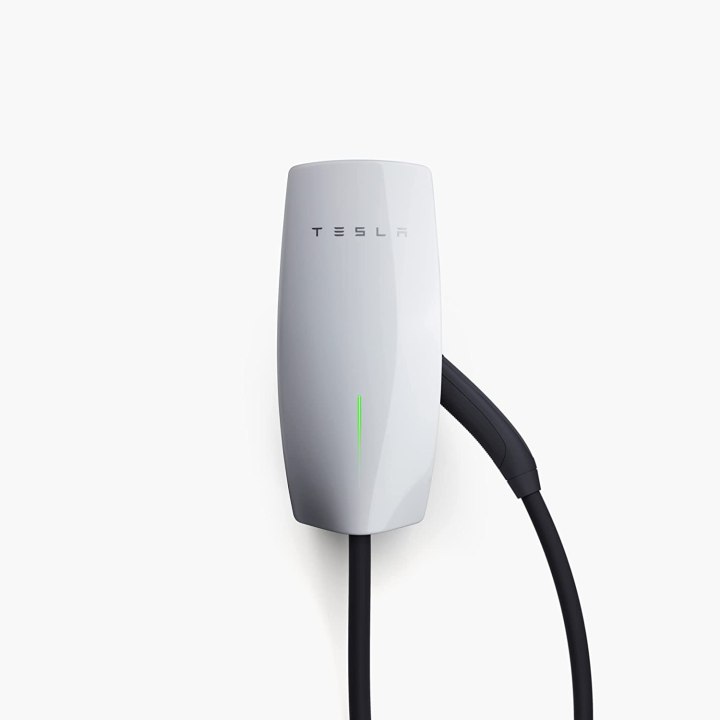
Tesla Wall Connector
A no-brainer for your Tesla
- Charging speeds up to 48A
- Tesla plug is increasingly popular
- Long four-year warranty
- No plug-in option
The Tesla Wall Connector could be a whole lot more useful in the next few years. If you have a Tesla, it's a no-brainer to get this over the competition, considering the fact that it can be monitored through the Tesla app and has the Tesla NACS connector. But, it can still be used with non-Tesla cars through an adapter, and as more carmakers, like Ford and GM, adopt Tesla's connector, fewer and fewer users will need to use it with an adapter.
This charger is hardwired, so you'll need to get a professional to install it. It has a 24-foot cord, and as mentioned, it works with the Tesla app. It's not overly expensive, which is nice, too.
| Hardwired or plug: | Hardwire |
| Amp rating: | Adjustable up to 48 amps |
| Wi-Fi capability: | Yes |
| Cord length: | 24 feet |
| Indoor/outdoor: | Yes |
| Warranty: | 4 years |

